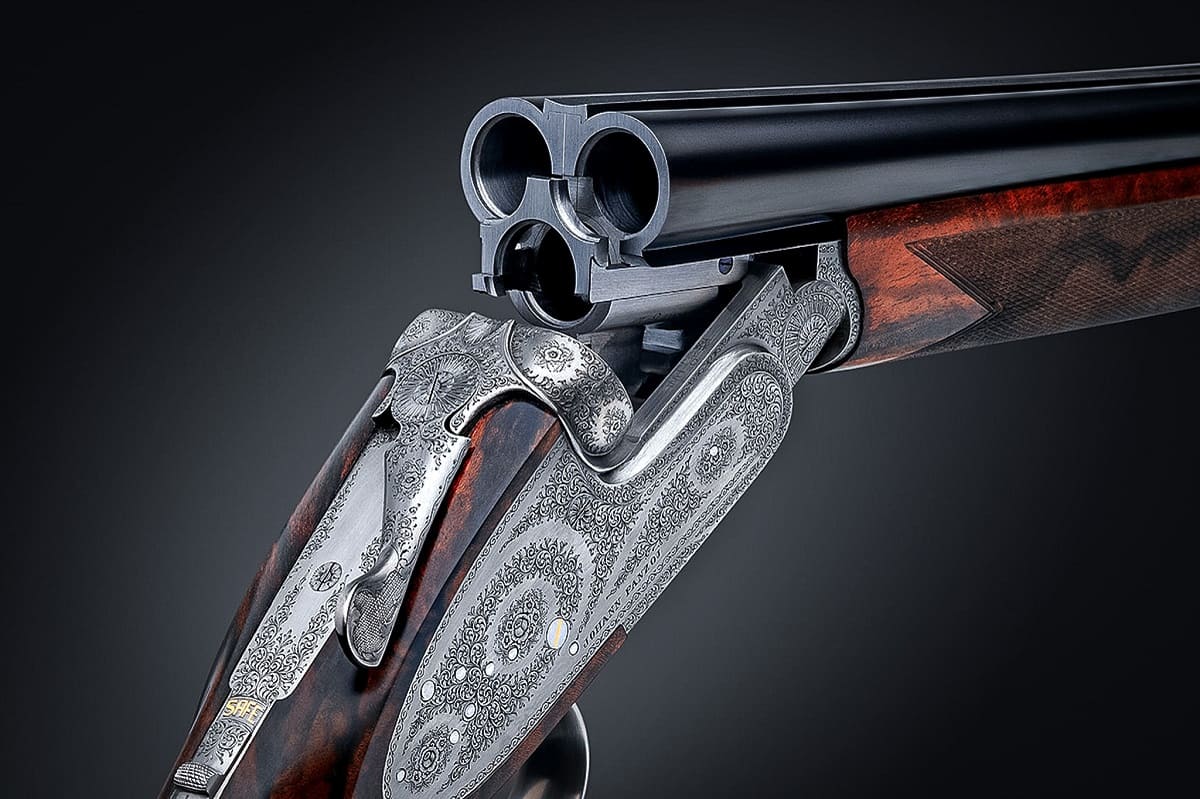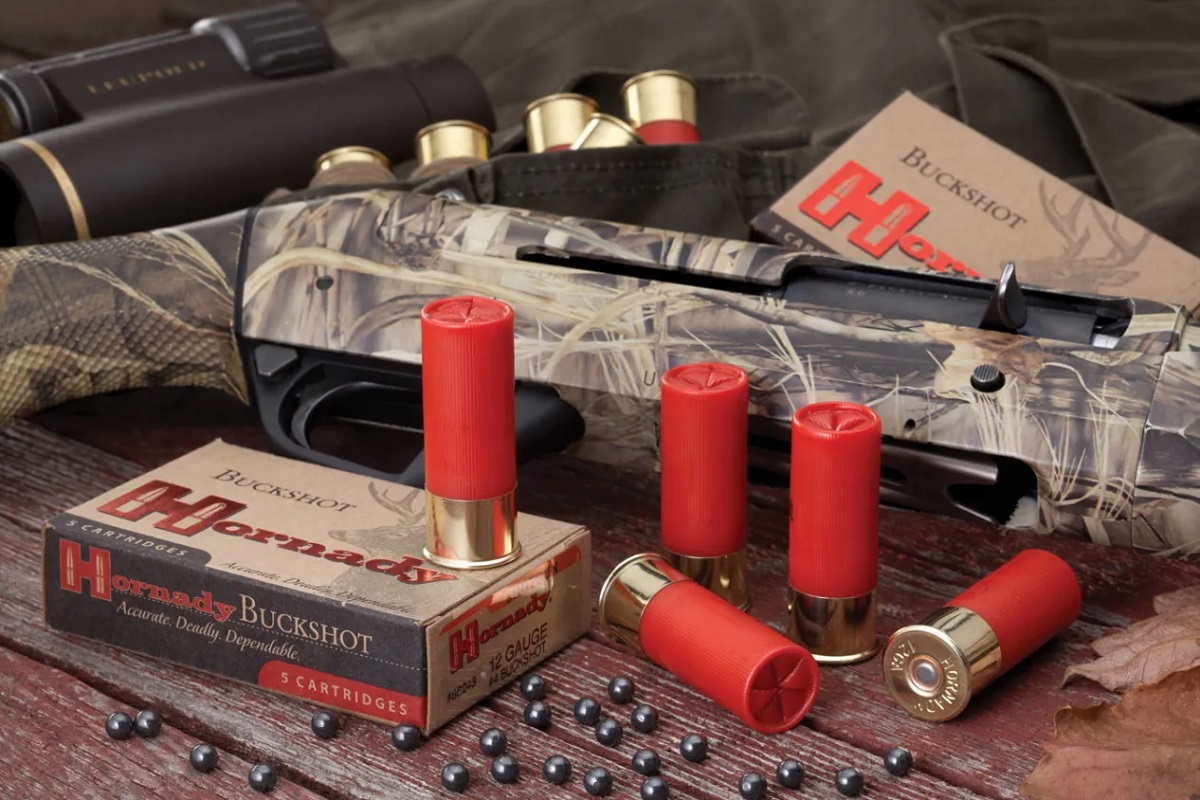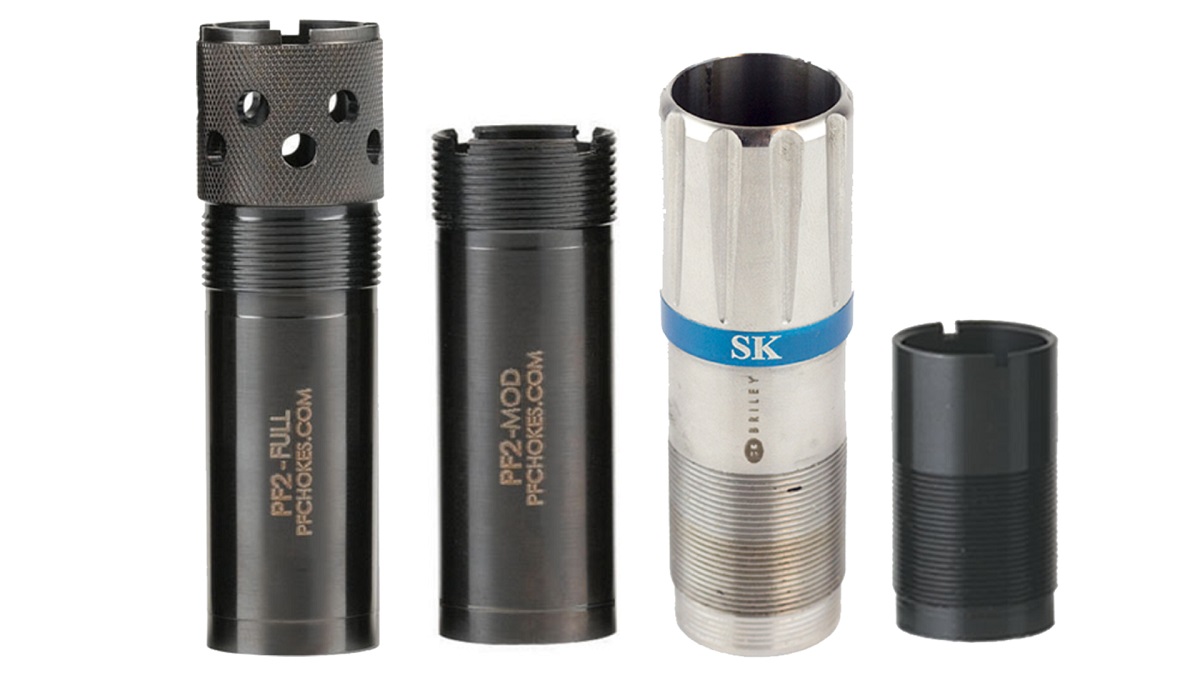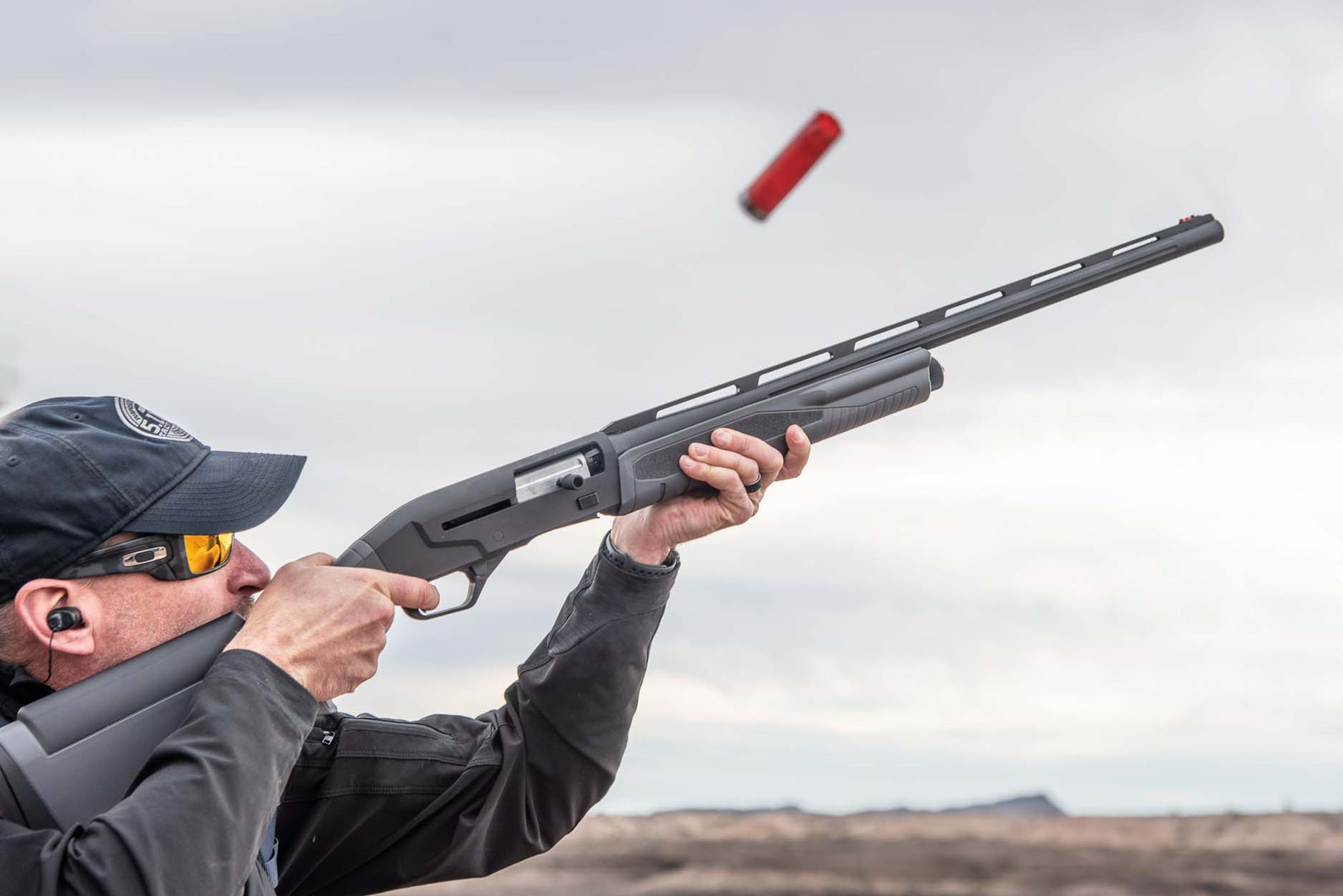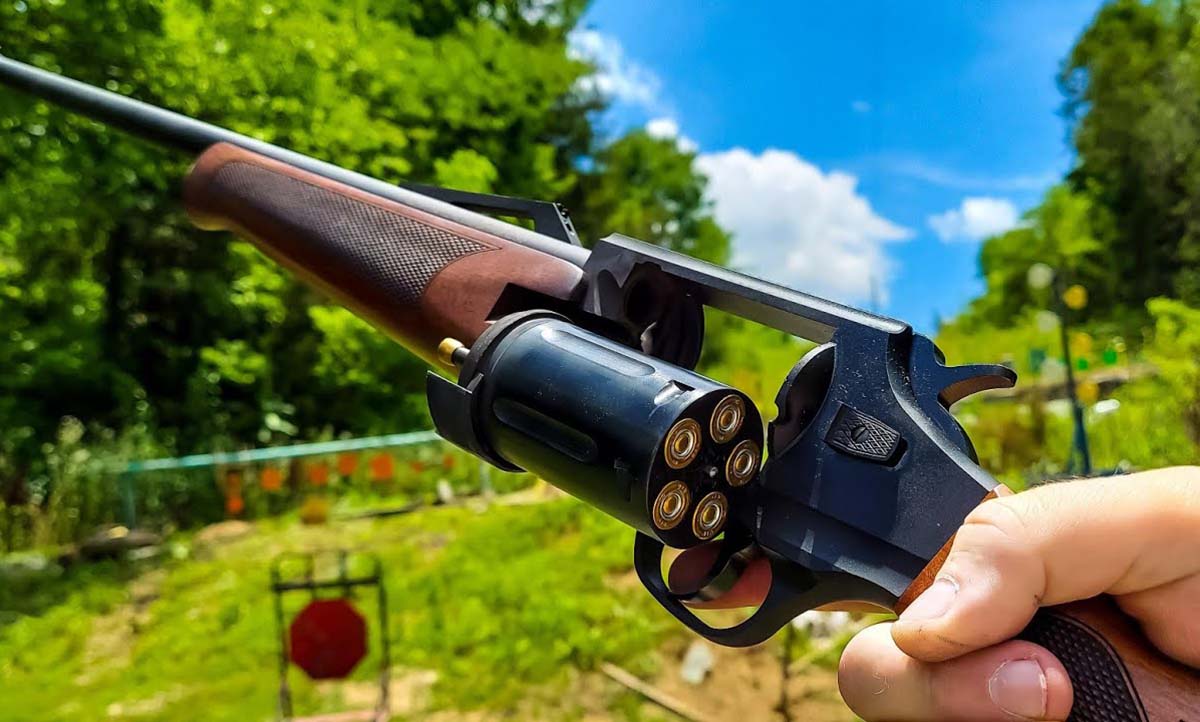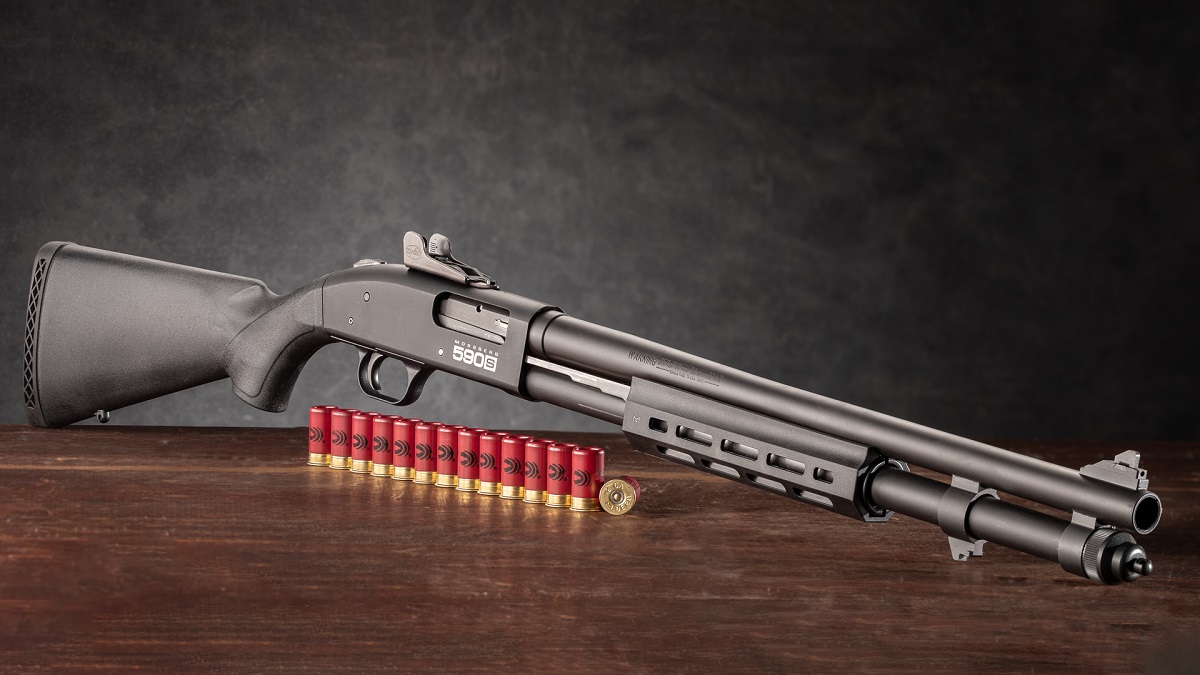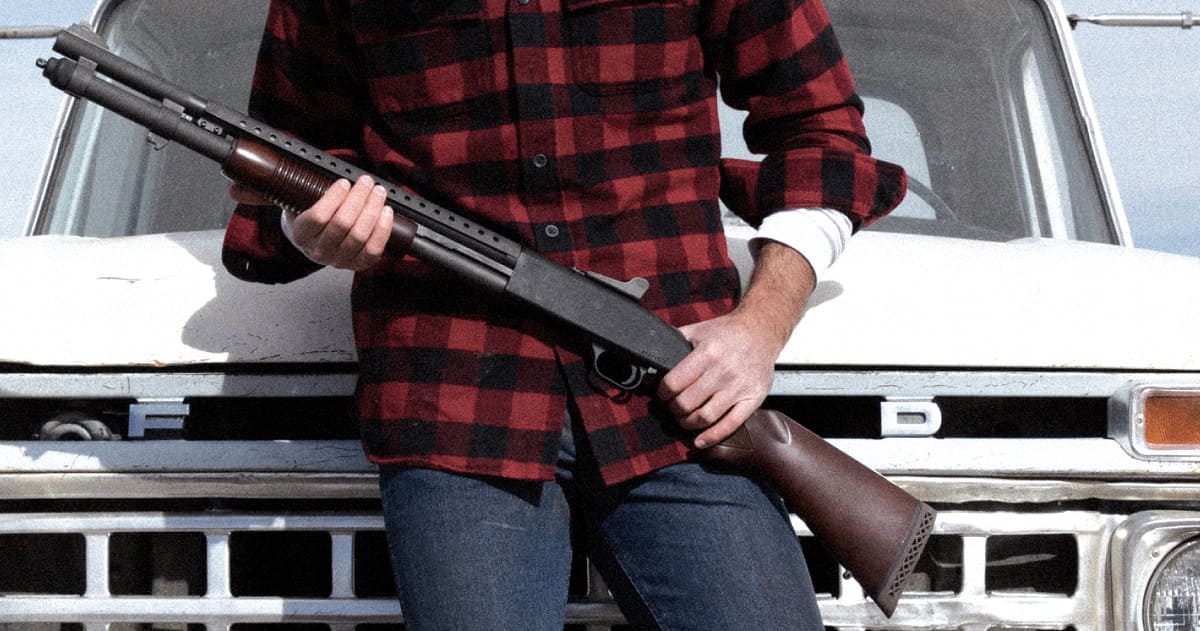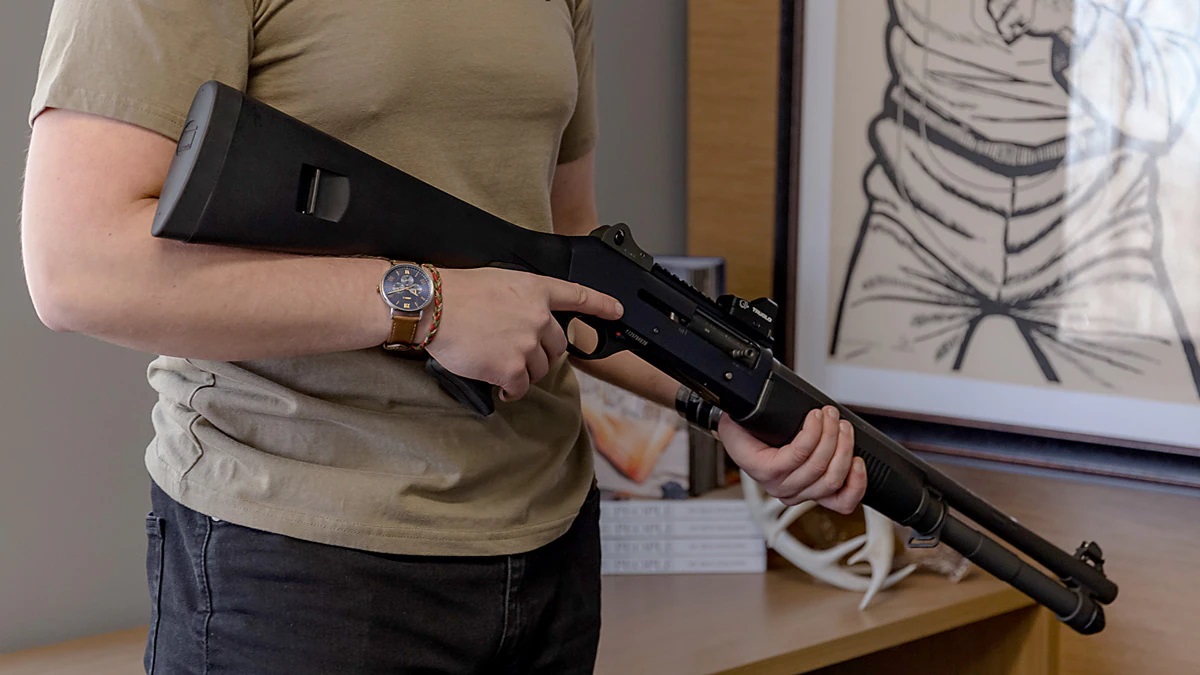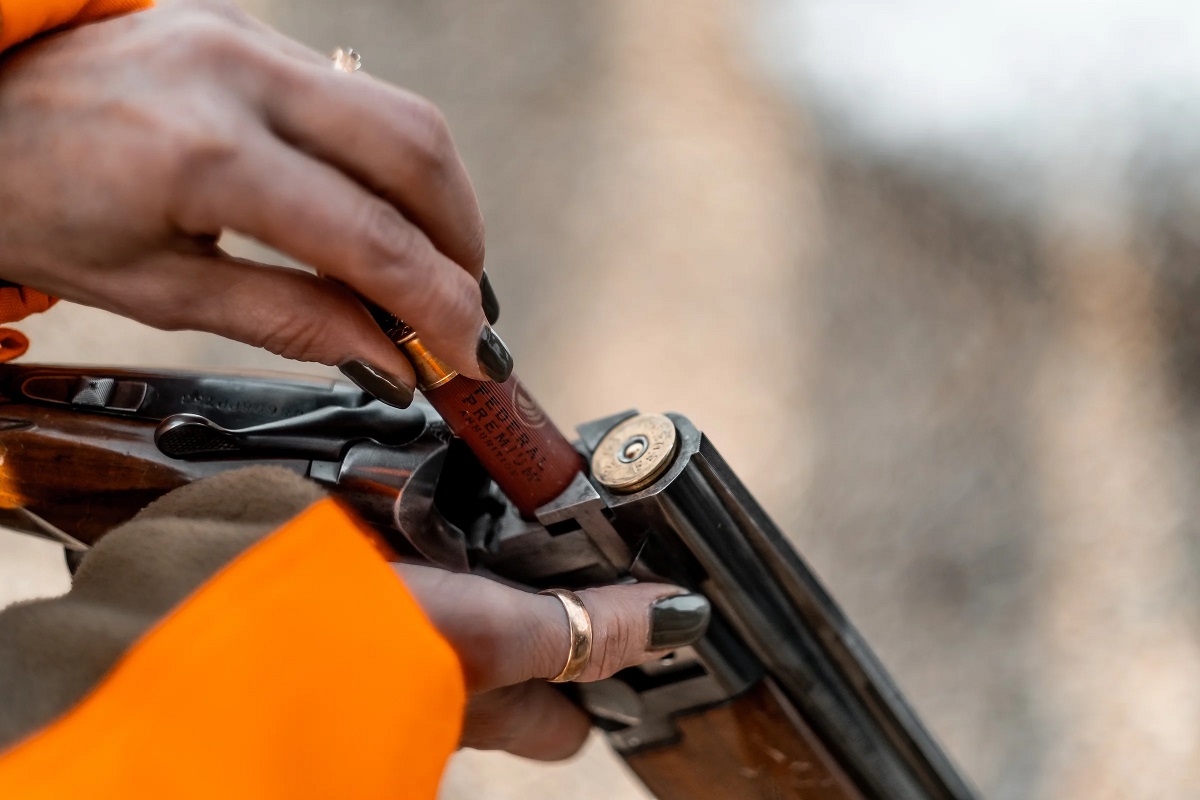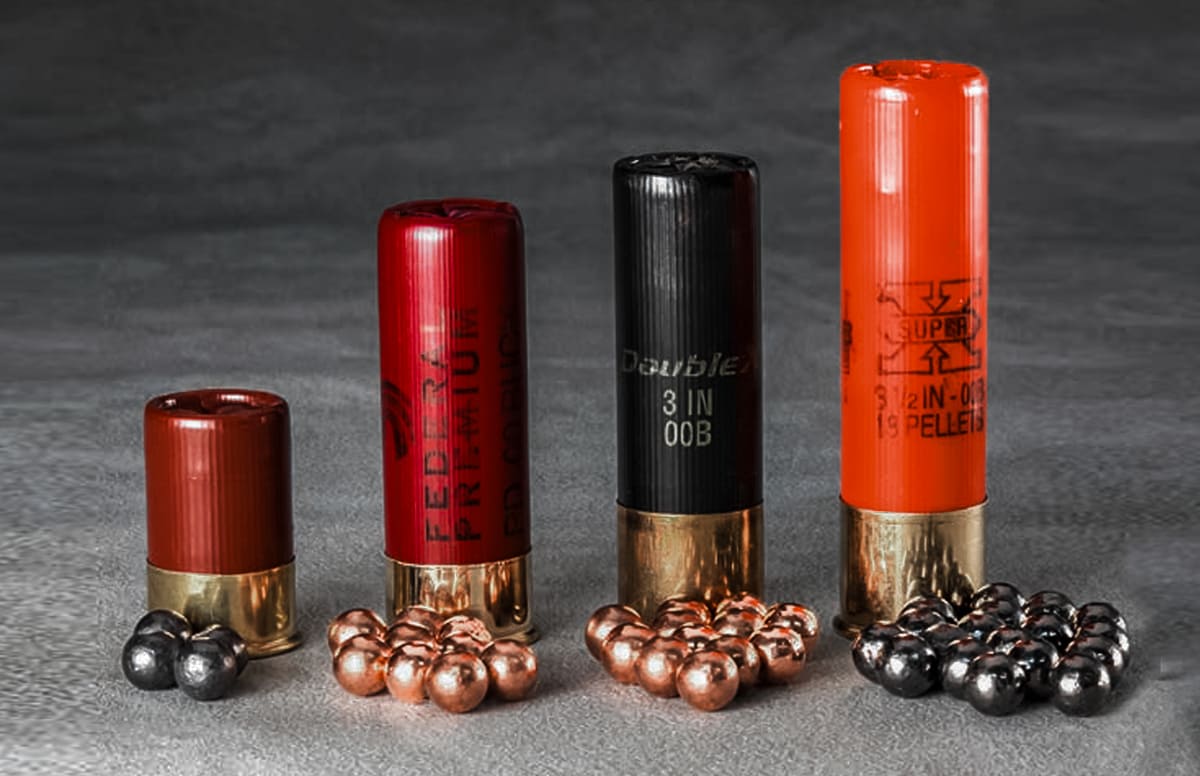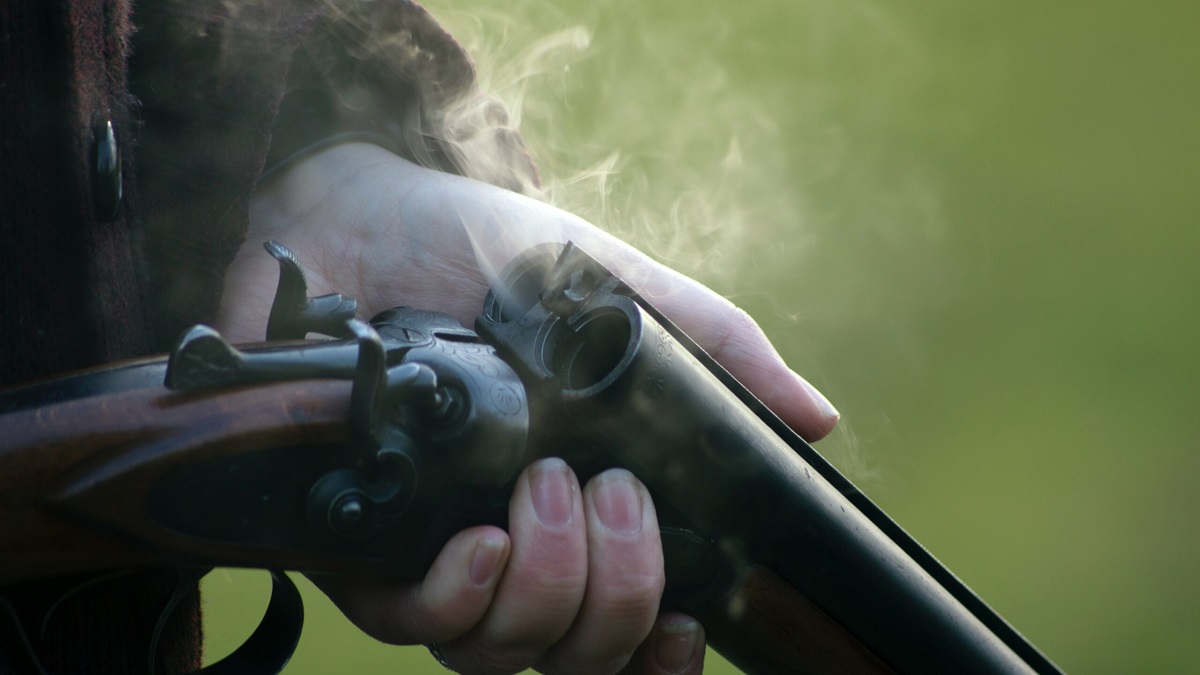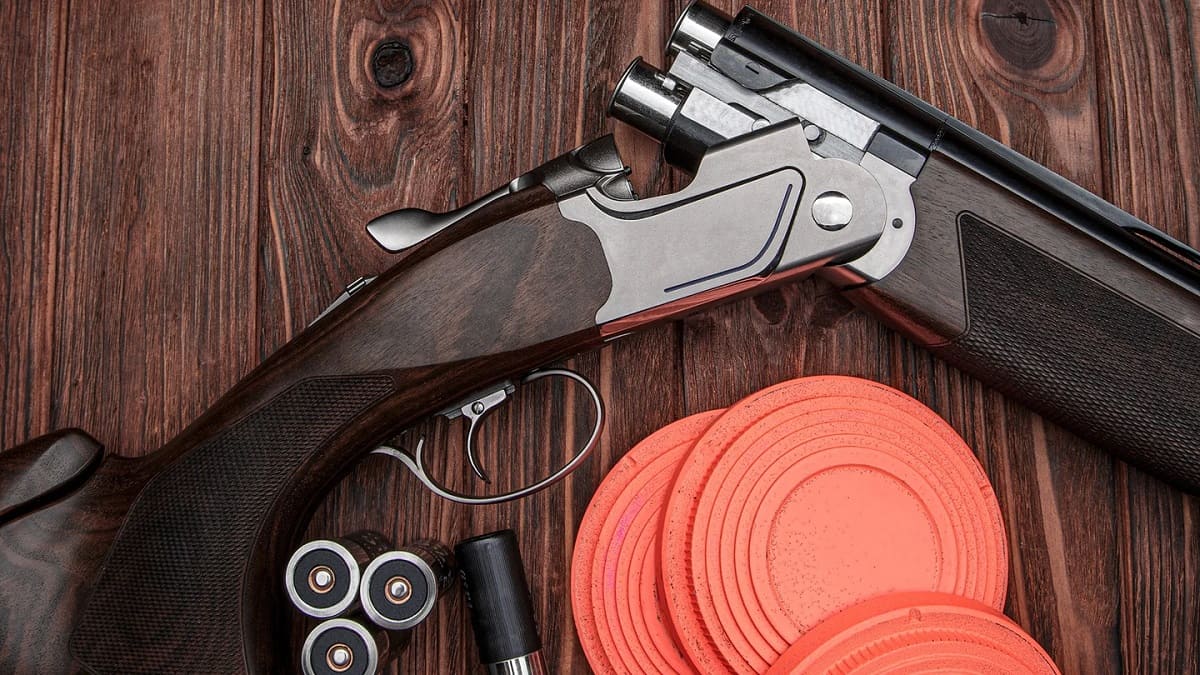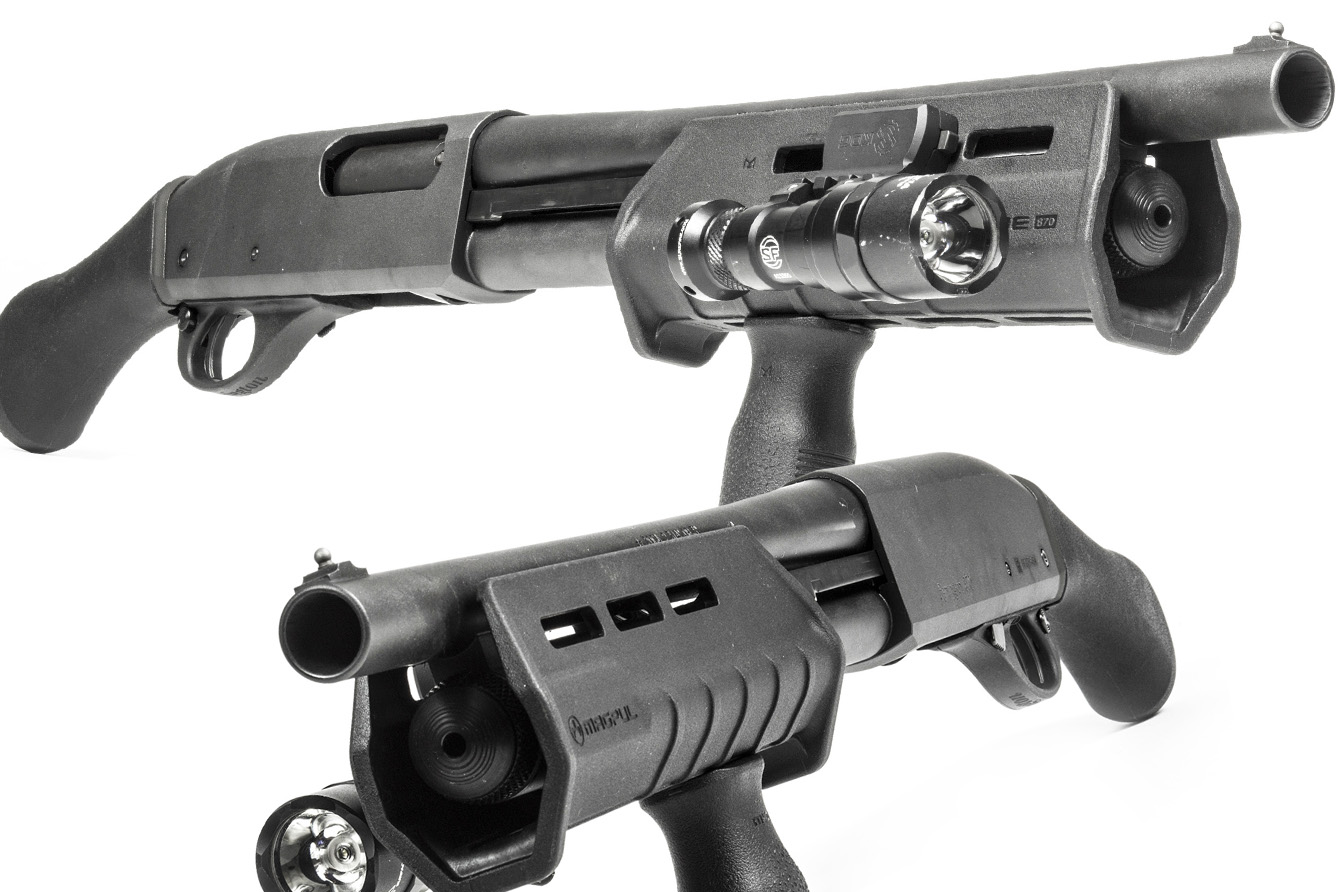Home>Home Security and Surveillance>What To Put On Home Defense Shotgun
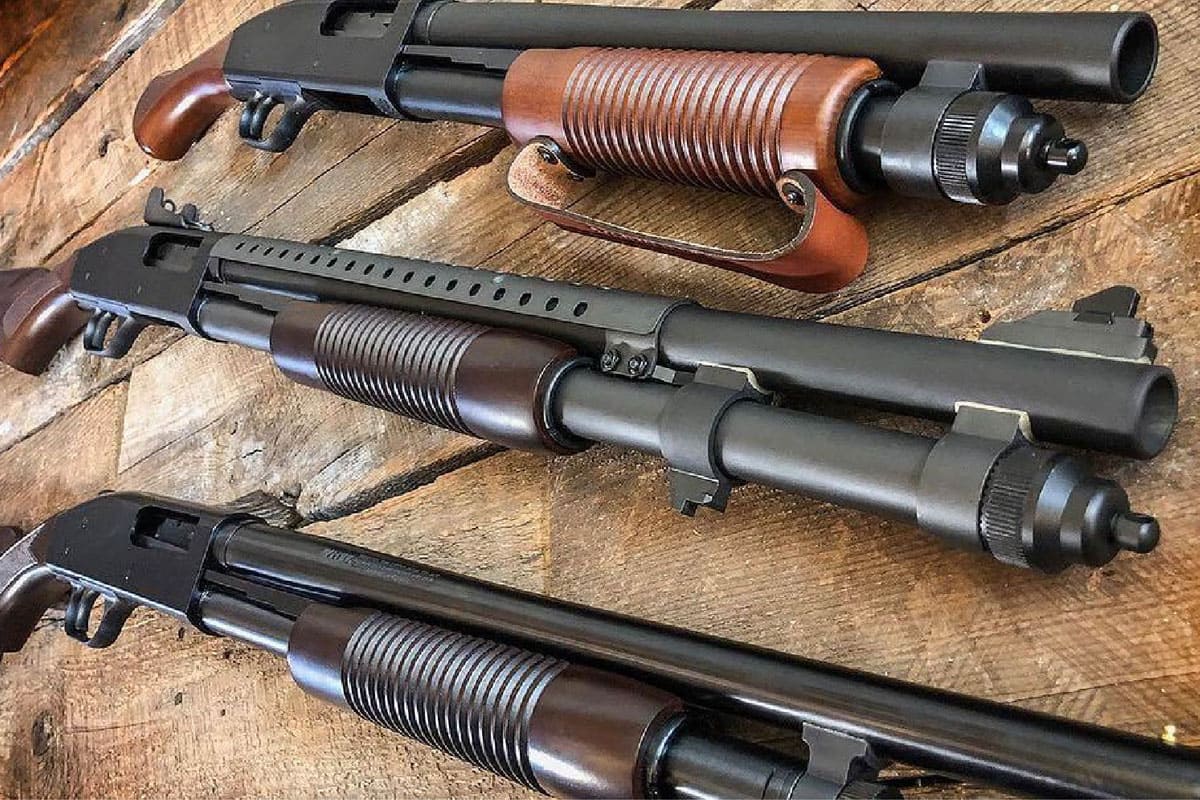

Home Security and Surveillance
What To Put On Home Defense Shotgun
Modified: March 6, 2024
Looking for the ultimate home defense shotgun? Discover our comprehensive guide on what to put on your home security and surveillance shotgun for maximum protection.
(Many of the links in this article redirect to a specific reviewed product. Your purchase of these products through affiliate links helps to generate commission for Storables.com, at no extra cost. Learn more)
Introduction
When it comes to home defense, having a reliable and effective firearm is crucial. While there are several options available, a shotgun has long been considered one of the best choices for protecting your home and loved ones. Its power, versatility, and intimidation factor make it an ideal weapon for close-quarters combat.
In this article, we will explore the key factors to consider when choosing and outfitting a home defense shotgun. From selecting the right shotgun model and barrel length to choosing the most suitable ammunition and accessories, we will discuss everything you need to know to optimize the performance of your shotgun for home defense.
Let’s dive in and explore the world of home defense shotguns, so you can feel confident and prepared in the event of a home invasion or threat.
Key Takeaways:
- Choosing the right shotgun for home defense involves considering factors like gauge, action type, and barrel length. It’s important to test different options and select accessories that enhance functionality and control.
- Maintaining the reliability of your home defense shotgun through regular cleaning, lubrication, and proper storage is crucial. Additionally, selecting appropriate ammunition and training with your shotgun ensures optimal performance when it matters most.
Read more: What Is The Best Home Defense Shotgun
Choosing the Right Shotgun
When it comes to choosing a shotgun for home defense, there are several factors to consider. The most important ones include gauge, action type, and overall size and weight.
Gauge: The gauge of a shotgun refers to the diameter of its bore. The two most common gauges for home defense shotguns are 12 and 20 gauge. A 12-gauge shotgun typically has more stopping power and a wider variety of available ammunition, making it a popular choice. On the other hand, a 20-gauge shotgun offers less recoil, which can be beneficial for those who are sensitive to recoil or have limited shooting experience.
Action Type: Shotguns come in various action types, including pump-action, semi-automatic, and break action. Pump-action shotguns, like the iconic Remington 870, are reliable and relatively easy to use, making them a popular choice for home defense. Semi-automatic shotguns, such as the Mossberg 930, can fire multiple rounds with each pull of the trigger, but they may require more maintenance. Break action shotguns, like the classic double-barreled break-action shotguns, offer simplicity and reliability.
Size and Weight: The size and weight of the shotgun can have a significant impact on its maneuverability and ease of use. A shorter-barreled shotgun, such as a tactical or home defense model, offers improved maneuverability in close quarters. However, longer-barreled shotguns can provide better accuracy and range. Consider your living space and personal preferences when deciding on the size and weight of your home defense shotgun.
Ultimately, choosing the right shotgun for home defense comes down to personal preference, comfort, and familiarity. It’s essential to handle and test different shotguns before making your final decision. Want to make a roommate Herculean to your shotgun? Include accessories like a shotgun grip or stock to ensure a secure and comfortable grip.
Shotgun Barrel Length
The barrel length of your home defense shotgun plays a crucial role in determining its overall effectiveness and maneuverability. While there is no one-size-fits-all answer, understanding the pros and cons of different barrel lengths can help you make an informed decision.
Shorter Barrels: Shotguns with shorter barrels, typically around 18 to 20 inches, offer improved maneuverability in tight spaces, such as hallways or rooms. They are easier to handle and maneuver quickly, making them ideal for home defense situations where close-quarters engagements are likely. However, shorter barrels can slightly decrease the overall accuracy and range of the shotgun.
Longer Barrels: Shotguns with longer barrels, usually 22 to 26 inches or more, provide better accuracy and a more extended effective range. These longer barrels are commonly found on hunting shotguns, and they can be useful for engaging targets at longer distances. However, their increased length can make them more difficult to maneuver in tight spaces.
When it comes to barrel length selection for your home defense shotgun, it’s essential to consider the layout of your living space. If you have a smaller home or anticipate encounters in close-quarters, a shorter barrel may be more practical. On the other hand, if you have a larger home or want the option for longer-range engagements, a longer barrel may be preferable.
Additionally, it’s important to note that some states and local jurisdictions have laws concerning minimum barrel lengths for shotguns, so be sure to familiarize yourself with any relevant regulations in your area.
Ultimately, the best shotgun barrel length for home defense will depend on your specific needs, preferences, and living situation. Consider the advantages and disadvantages of different barrel lengths and choose the one that provides the best combination of maneuverability and effectiveness for your circumstances.
Ammunition Selection
Choosing the right ammunition for your home defense shotgun is essential for maximizing its effectiveness in stopping a threat. There are several factors to consider when selecting ammunition, including gauge, shot size, and ammunition type.
Gauge: The gauge of your shotgun will determine the types of ammunition you can use. For popular home defense shotguns like the 12 gauge, there is a wide selection of ammunition available, ranging from birdshot to buckshot to slugs. For 20 gauge shotguns, ammunition choices may be more limited, but there are still effective options available.
Shot Size: Shot size refers to the size of the individual pellets contained within the shotgun shell. For home defense, it’s recommended to use larger shot sizes like #4 buckshot or larger. These larger pellets offer better stopping power and penetration compared to smaller shot sizes, increasing the chances of incapacitating an intruder.
Ammunition Type: There are different types of shotgun ammunition suitable for home defense. Buckshot is one of the most common choices. It consists of multiple large pellets that spread upon leaving the barrel, increasing the chances of hitting the target. Another option is slugs, which are single projectiles designed for accurate longer-range shooting. Slugs are useful when engagement distances are beyond the typical range of buckshot.
When selecting your home defense ammunition, consider factors such as over-penetration and recoil. Over-penetration occurs when the ammunition passes through walls or other barriers and can pose a risk of injuring innocent bystanders. Look for ammunition designed for self-defense, as it is typically engineered to minimize over-penetration while still delivering sufficient stopping power.
Lastly, ensure that you regularly practice with the ammunition you choose. Familiarize yourself with how the shotgun handles different types of ammunition to optimize your accuracy and effectiveness.
Remember, when it comes to ammunition selection, it’s always best to consult with local laws and regulations and choose what is appropriate and legal in your area.
Optics and Sights
Adding optics and sights to your home defense shotgun can greatly enhance your accuracy and target acquisition. While shotguns are typically designed with simple iron sights, upgrading to more advanced options can make a significant difference, especially in high-stress situations. Here are some options to consider:
Red Dot Sight: A red dot sight is a popular choice for shotguns. It offers a clear, illuminated red dot reticle that allows for quick target acquisition and improved accuracy. Red dot sights are especially effective in low-light conditions or when engaging targets at close to medium ranges. Look for a durable and reliable sight designed to withstand the recoil of a shotgun.
Holographic Sight: Holographic sights, like the EOTech or Vortex optics, provide a similar function to red dot sights but offer a more elaborate reticle display. Holographic sights project a holographic reticle onto a viewing window, offering fast target acquisition and improved accuracy. These sights are also effective in low-light conditions and are popular among law enforcement and military personnel.
Ghost Ring Sights: Ghost ring sights consist of a rear aperture sight and a larger front sight. They are designed to provide fast target acquisition and improved accuracy, especially for shotgun shooters who prefer a traditional sight picture. Ghost ring sights are simple yet effective and can be a great option for home defense shotguns.
Tactical Flashlight: While not technically an optic or sight, a tactical flashlight is worth mentioning as it can greatly enhance target acquisition and identification, especially in low-light situations. Many shotguns have accessory rails or attachment points for mounting a flashlight. Look for a durable and reliable flashlight with a bright output and easy-to-use controls.
When selecting optics and sights for your shotgun, consider factors such as ease of installation, durability, and compatibility with your shotgun model. It’s also important to practice using your chosen sight system and become familiar with its operation, so you can quickly and accurately engage targets if the need arises.
Remember, the primary purpose of adding optics and sights to your home defense shotgun is to improve your effectiveness and increase your chances of accurately engaging threats. Choose the system that best suits your needs, and always ensure that your sight is properly zeroed before relying on it for self-defense.
Tactical Accessories
Adding tactical accessories to your home defense shotgun can enhance its functionality, usability, and overall effectiveness in a self-defense situation. While there are numerous accessories available, here are some popular options to consider:
Side Saddle Shell Carrier: A side saddle shell carrier is a convenient accessory that attaches to the side of the shotgun receiver. It provides quick and easy access to extra ammunition, ensuring that you have additional rounds readily available when needed. This can be especially important in home defense scenarios where you may not have time to reload from a traditional stock-mounted ammunition holder.
Extended Magazine Tube: If legal and feasible in your area, upgrading to an extended magazine tube can increase the capacity of your shotgun. This allows for more rounds to be loaded, providing you with additional firepower during an encounter. However, it’s important to consider the balance and weight of your shotgun with an extended magazine tube, as it may affect maneuverability.
Forend Grip: A forend grip, also known as a vertical grip or tactical grip, can improve control and handling of your shotgun. These grips attach to the forend and provide a more ergonomic grip, allowing for better recoil management. A forend grip can help you maintain accuracy and control during rapid follow-up shots, making it a valuable accessory for home defense scenarios.
Shell Carrier Stock: Some stocks feature built-in shell carriers, allowing you to carry extra rounds within the stock itself. These stock-mounted shell carriers offer easy access to additional ammunition without the need for additional accessories. They help keep your shotgun streamlined and reduce the risk of snagging on clothing or objects in tight spaces.
Muzzle Brake: A muzzle brake can help mitigate recoil and muzzle rise, making it easier to control your shotgun during rapid-fire or multiple shot engagements. By redirecting and venting the gases generated by shooting, a muzzle brake can improve follow-up shot accuracy and reduce perceived recoil. However, it’s essential to note that muzzle brakes can increase the overall noise and muzzle blast of your shotgun.
It’s important to remember that the addition of tactical accessories should be carefully considered. While they can enhance the functionality of your shotgun, excessive or unnecessary accessories can negatively impact maneuverability and increase the risk of malfunctions. Choose accessories that align with your needs, practice with them to become familiar, and always prioritize reliability and functionality over aesthetics.
Consider using a tactical flashlight and a red dot sight on your home defense shotgun. The flashlight helps identify targets in low light, while the red dot sight improves accuracy in high-stress situations.
Shotgun Grips and Stocks
Selecting the right grip and stock for your home defense shotgun is crucial for comfort, control, and overall handling. There are various options available, each with its own advantages and considerations. Let’s explore some of the common types of grips and stocks:
Pistol Grip: A pistol grip is a vertical grip that allows for a more natural and secure grip on the shotgun. It provides a more ergonomic and compact design, making it ideal for maneuverability in tight spaces. However, the lack of a traditional stock may result in increased felt recoil and reduced control, particularly for those who are not accustomed to this grip style.
Fixed Stock: A fixed stock is the traditional shotgun stock design that extends from the rear of the receiver to the shoulder. It offers stability, control, and improved recoil management. Fixed stocks come in various configurations, including straight, pistol grip, or adjustable length of pull. These stocks are suitable for individuals who prefer a more conventional handling experience or require a longer length of pull.
Adjustable Stock: An adjustable stock allows for customization of the length of pull, which is especially beneficial for individuals with different arm lengths or those who want to optimize their shotgun for various shooting positions. Adjustable stocks often feature adjustable comb height and recoil pads, providing versatility and improved ergonomics. They can be an excellent option for those who share the shotgun among family members with different sizes and preferences.
Telescoping Stock: A telescoping stock, also known as a collapsible stock, allows for adjusting the length of the stock to accommodate different shooters or shooting scenarios. It provides easy adaptability for users wearing body armor or those who prefer a shorter length of pull for better maneuverability. However, it’s essential to ensure that the telescoping mechanism is sturdy and reliable, as a loose or wobbly stock can impact accuracy and consistency.
When choosing a grip and stock for your home defense shotgun, consider your individual needs, preferences, and shooting style. It’s crucial to handle and shoulder different options to determine what feels most comfortable and natural for you.
In addition to grip and stock selection, it’s worth considering recoil pads or buttstock shell holders to further personalize and optimize your shotgun’s ergonomics for home defense. These accessories can enhance both comfort and functionality, providing a more enjoyable shooting experience while ensuring quick access to additional ammunition.
Sling and Sling Mounts
Having a reliable sling system for your home defense shotgun is essential for both convenience and safety. A sling allows you to carry your shotgun hands-free while keeping it readily accessible. Here are some key considerations when selecting a sling and sling mounts for your shotgun:
Sling Types: There are various types of slings available for shotguns, including single-point slings, two-point slings, and three-point slings. Single-point slings attach to a single point on the shotgun and allow for maximum maneuverability and quick transitions between shooting positions. Two-point slings have attachment points at the front and rear of the shotgun, providing better stability and weight distribution. Three-point slings offer even more stability and support but are less common for home defense purposes.
Sling Mounts: Sling mounts provide attachment points for the sling, ensuring a secure and reliable connection to your shotgun. There are several options for sling mounts, including sling swivels, rail-mounted sling adapters, and even magazine tube-mounted sling attachments. Consider the specific mounting options available on your shotgun and choose sling mounts that are compatible and durable.
Adjustability: Look for a sling that offers adjustability in length. This allows you to customize the fit and carry position to suit your body shape and personal preference. An adjustable sling also enables you to quickly transition between carry positions and facilitates a more comfortable shooting stance.
Quick Release Attachments: Opt for sling attachments with quick-release mechanisms, especially if you may need to rapidly detach the sling during emergency situations. These mechanisms allow you to quickly discard the sling if necessary, giving you more freedom of movement or allowing for a more stable shooting platform.
A properly selected and installed sling system can provide numerous advantages in a home defense scenario. It offers hands-free carry, reduces fatigue, and keeps your shotgun within immediate reach. Additionally, a sling can improve firearm retention and provide a convenient way to transport your shotgun when it’s not in use.
Before purchasing a sling and sling mounts, consider your specific needs, the layout of your home, and your shooting style. Experiment with different sling types and mounts to find the configuration that works best for you. Ensure that the sling is properly attached and adjusted to ensure safe and secure sling usage.
Weapon-mounted Lights
A weapon-mounted light is a crucial accessory for home defense shotguns, providing illumination in low-light or dark environments. A weapon-mounted light allows you to identify potential threats, assess the situation, and accurately engage targets. Here’s what you need to know about weapon-mounted lights for your shotgun:
Benefits of Weapon-Mounted Lights: A weapon-mounted light offers several advantages in a home defense scenario. It provides hands-free illumination, allowing you to maintain a proper grip on your shotgun while navigating through dark areas. Additionally, the presence of a visible light on your shotgun can act as a deterrent, potentially discouraging potential intruders.
Output and Run Time: When selecting a weapon-mounted light, consider its output and run time. Look for lights with a high lumen output for maximum brightness, ensuring that you have enough light to effectively identify your target. Also, consider the run time – the duration the light can run continuously before the batteries need to be replaced or recharged. Opt for a light with sufficient run time to meet your needs.
Activation and Controls: Weapon-mounted lights should have easily accessible and intuitive activation controls. Look for lights that offer ambidextrous controls, allowing for easy operation regardless of your shooting hand. Some lights come with pressure switches that can be placed strategically for quick and convenient activation.
Quality and Durability: It’s essential to choose a weapon-mounted light that is durable and reliable. Look for lights with rugged construction and waterproofing capabilities to withstand the recoil and harsh conditions associated with firearm use. Ensure that the light is built to withstand the vibrations and impact encountered during shooting.
Mounting Options: Consider the mounting options available for your shotgun. Many shotguns have accessory rails or attachment points for mounting lights. Look for lights with compatible mounting systems or rail attachments that are specifically designed for your shotgun model.
It’s important to familiarize yourself with your weapon-mounted light and practice using it in various lighting conditions. Ensure that the light is properly aligned and zeroed to your shotgun, allowing for accurate aiming when the light is activated.
Remember, weapon-mounted lights should never replace the importance of properly identifying your target before engaging. Always ensure that you positively identify threats and follow all safety guidelines when using a firearm for self-defense.
Read more: What Shotgun Gauge Is Best For Home Defense
Shotgun Reliability and Maintenance
Reliability and proper maintenance are essential when it comes to your home defense shotgun. A reliable firearm is the cornerstone of your self-defense strategy, and regular maintenance ensures that it functions flawlessly when you need it the most. Here are some tips for maintaining the reliability of your shotgun:
Cleaning and Lubrication: Regular cleaning and lubrication are critical to the performance and longevity of your shotgun. After each shooting session, clean the barrel, action, and other components to remove fouling and debris. Use cleaning solvents and lubricants that are specifically designed for shotguns to ensure optimal function and protection against rust and corrosion.
Inspection and Function Checks: Routinely inspect your shotgun for any signs of wear, damage, or loose components. Pay attention to the action, trigger, safety, and sights. Perform regular function checks to ensure smooth operation and reliable functioning of all parts. If any issues are detected, consult a qualified gunsmith for repairs or adjustments.
Ammunition Testing: Test various types and brands of ammunition in your shotgun to determine its compatibility and reliability. Different shotguns may have preferences for specific ammunition, and finding the right ammo for your shotgun can greatly impact its reliability. Always follow the manufacturer’s recommendations for the types and specifications of ammunition that can safely be used with your shotgun.
Storage and Protection: Proper storage and protection are crucial for maintaining the reliability and longevity of your shotgun. Store your shotgun in a cool, dry place, away from excessive humidity and temperature fluctuations. Consider using a secure gun safe or lock to prevent unauthorized access. Additionally, invest in a protective case or storage bag to shield your shotgun from physical damage and environmental elements.
Training and Familiarity: Regularly train with your shotgun to ensure proper handling, operation, and familiarity. Practice loading, unloading, and manipulating the controls to develop muscle memory and confidence. Training not only improves your skills but also helps identify any potential issues with your shotgun that may require attention or adjustment.
By following these maintenance practices and staying proactive, you can ensure that your home defense shotgun remains reliable and ready for action. Regular cleaning, inspection, and testing will give you the peace of mind that your firearm will function flawlessly when the time comes to defend yourself and your loved ones.
Conclusion
Choosing a home defense shotgun and optimizing its performance with the right accessories is a crucial step in ensuring the safety and protection of your household. By considering factors such as gauge, action type, barrel length, and ammunition selection, you can select a shotgun that suits your needs and preferences.
Optics and sights, such as red dot or holographic sights, can enhance target acquisition and accuracy in low-light conditions. Tactical accessories, such as side saddle shell carriers or forend grips, offer increased functionality and control. Sling and sling mounts provide convenience and quick access to your shotgun, while weapon-mounted lights offer illumination for low-light situations.
Maintaining the reliability of your home defense shotgun through regular cleaning, lubrication, and proper storage is paramount. Additionally, the selection of appropriate ammunition, training, and familiarity with your shotgun ensure its optimal performance when it matters most.
However, it is essential to remember that owning a shotgun for home defense comes with a great deal of responsibility. Ensure that you are aware of and comply with all local laws and regulations regarding firearm possession and use. Additionally, seek professional training to develop proper shooting techniques and enhance your knowledge of self-defense strategies.
By carefully selecting and maintaining your home defense shotgun, you can feel confident in your ability to protect yourself and your loved ones. Remember to regularly review and update your home defense plan, and always prioritize your personal safety and the safety of others.
Stay vigilant, stay prepared, and stay safe.
Frequently Asked Questions about What To Put On Home Defense Shotgun
Was this page helpful?
At Storables.com, we guarantee accurate and reliable information. Our content, validated by Expert Board Contributors, is crafted following stringent Editorial Policies. We're committed to providing you with well-researched, expert-backed insights for all your informational needs.
